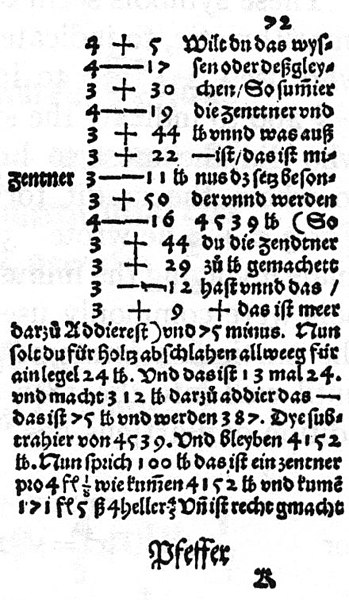Subtraction is one of the four arithmetic operations along with addition, multiplication and division. Subtraction is an operation that represents removal of objects from a collection. For example, in the adjacent picture, there are 5 − 2 peaches—meaning 5 peaches with 2 taken away, resulting in a total of 3 peaches. Therefore, the difference of 5 and 2 is 3; that is, 5 − 2 = 3. While primarily associated with natural numbers in arithmetic, subtraction can also represent removing or decreasing physical and abstract quantities using different kinds of objects including negative numbers, fractions, irrational numbers, vectors, decimals, functions, and matrices.
Placard outside a shop in Bordeaux advertising subtraction of 20% from the price of the second perfume purchased.
1 + ... = 3
The difference is written under the line.
9 + ... = 5 The required sum (5) is too small.
The plus sign and the minus sign are mathematical symbols used to denote positive and negative functions, respectively. In addition, + represents the operation of addition, which results in a sum, while − represents subtraction, resulting in a difference. Their use has been extended to many other meanings, more or less analogous. Plus and minus are Latin terms meaning "more" and "less", respectively.
From Johannes Widmann's book on "handy and pretty arithmetic for all merchants"





